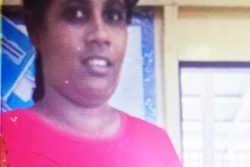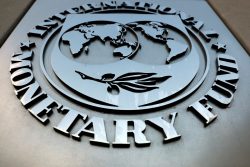Anyone who reads widely will attest to the joyful revelation that can come from the written word. Sometimes it’s from the extended drawn out journey that takes you to a totally different world, as in the immersion in Russian culture that Boris Pasternak leads you through in “Doctor Zhivago”. Sometimes it’s in the sudden surge of a single line as in a Martin Carter poem, or a Cormac McCarthy novel.
 A book can transport you to another place, another time, another behaviour, and can literally startle you into a realization, sometimes from a single paragraph. However, reading is often at its most powerful when it takes you into another mind, another way of thinking, that is completely new to you. In those moments, the awakening is so strong, that one is literally startled into stopping the reading; you find yourself staring into space accommodating your brain to these new concepts. I will return to that.
A book can transport you to another place, another time, another behaviour, and can literally startle you into a realization, sometimes from a single paragraph. However, reading is often at its most powerful when it takes you into another mind, another way of thinking, that is completely new to you. In those moments, the awakening is so strong, that one is literally startled into stopping the reading; you find yourself staring into space accommodating your brain to these new concepts. I will return to that.
On the other hand, sometimes a book will recreate for you a situation you lived in, or a place you knew about long ago, and you find yourself back there treasuring again the nuggets of that time; it’s like a sweet taste in your mouth.
Recently, for example, I ran into “In The Main” by J. S. Barber, about the MCC 1967-68 tour of the West Indies, and I have to tell you it’s the sweetest book I’ve read in ages. To begin with, Barber’s cricket book is not only about cricket. Although sometimes his observations are askew, he makes a good effort at giving his readers some sense of the diversity of our region, and often captures very well some singular essence of these places.
He makes the telling observation, for instance, that although Trinidad had been Spanish for 300 years, Trinidadians are actually more French in expression and spirit as the carnival flavour in their lifestyle shows.
He identifies the tensions in the Jamaican culture and says “Jamaicans are not noted for their servility, capacity for deference, nor for the limitless patience essential in the good servant.”
He informs us that it was an Anglo-Guyanese, John Powell, who discovered Barbados (we need to remind Prime Minister Thompson about this) and that it was the Guyanese Dutch who taught the British and French West Indies planters about sugar. Barber also states that it was the Georgetown Cricket Club, in colonial times, that conceived the idea of a regional West Indies cricket team.
Barber’s writing about the series reflects his knowledge of the game, but he also deals with his subject in an entertaining fashion and the famous trenchant English humour is often on display. Against the background of some uncertainty in England about Colin Cowdrey’s captaincy, Barber refers to some dubious decisions by the WI captain Garfield Sobers in the First Test, and Cowdrey’s good moves, by saying: “The large question mark about Cowdrey’s capacity for leadership had been effectively removed. It had now reappeared above Sobers’ head.”
The book is a delight (the picture of Clive Lloyd hitting a six over long leg is an athletic gem) and is particularly warming because it takes us back, in bright, candid fashion, to a time when West Indies were the champions and the whole world watched.
“In The Main” was published by Pelham Books in 1967, so it will be hard to get, but try; it’s full of juicy observations about Caribbean life and people, and reliving those glorious cricket times will give you a glow.
When I wrote earlier about reading being able to introduce us to “another way of thinking”, I had in mind a very recent book on education written by John Abbott entitled “Overschooled and Undereducated”.
Abbott is President of the 21st Century Learning Initiative, a transnational association of educators and learning researchers, and he proposes, in effect, that current education systems are inadequate because they operate, generally, on the premise of requiring students in primary education to take in information on various subjects for which they are later tested. He contends that the learning/thinking process, which is the ultimate purpose of education, develops better in adolescence if the student is involved with personal discovery rather than with simply memorizing existing material. Abbot says that teenagers’ instinctive need to do things for themselves, rather than being restrained, should be treated as an opportunity to develop the learning apparatus. Adolescents need “a careful mixture of guidance and the space to work things out for themselves.”
Abbott’s book is the result of a series of international conferences, and considers the education systems in Scotland, Wales, Ireland, Canada, the US, Australia and New Zealand. The book is innovative. It is arguing for transformational change in education based on a developed understanding of the process of learning.
In the early part of the book, the authors present several fascinating chapters with new research on the operating process of the brain. Too detailed to go into here, those chapters are particularly fascinating because they explain the creative brain scenario in layman’s language with a clarity that makes sense. Among other things, it helps to unravel the artistic mind: the research shows that the creative processes in a brain become more potent and inventive when an individual, in early life, is given space, by circumstance or intent, to imagine, daydream and experiment. In such individual focus, the book contends, the brain is free of surrounding distractions that can derail explorations into the extra-ordinary, and it explains the creative brain as one that developed differently.
Abbott’s book is, essentially, about a new way of seeing mankind (albeit from a specialist stance) and is one of those examples of a read that takes you inside a completely different deliberation. It will be available here shortly in Austin’s Book Store.
An ironic note: In the cricket book I cited earlier, J. S. Barber wrote about the sold-out Queens Park Oval in 1968 where a crowd of more than 22,000 watched some stiff batting from WI in a rearguard fight. I am writing this column in 2010. The West Indies team is playing South Africa, at the same Queen’s Park Oval, but now it is before a few hundred spectators, and five of our batsmen have gone down, two not even offering a stroke, playing exactly the same ball – an inswinger aimed at off stump, from fast bowler Dale Steyn. How different our cricket fortunes are from 1968 to now; Barber’s book reminds us.
Finally, simply for the use of language, I cannot resist this quote from the Englishman. It’s the second Test at Sabina on a deteriorating pitch. Cowdrey had gone on the defensive, then lost wickets. Says Barber: “This preoccupation with mere occupation served Cowdrey’s purpose before lunch but boomeranged on him afterwards. Procrastination is a thief of other things than time.” That final line is an absolute gem.








